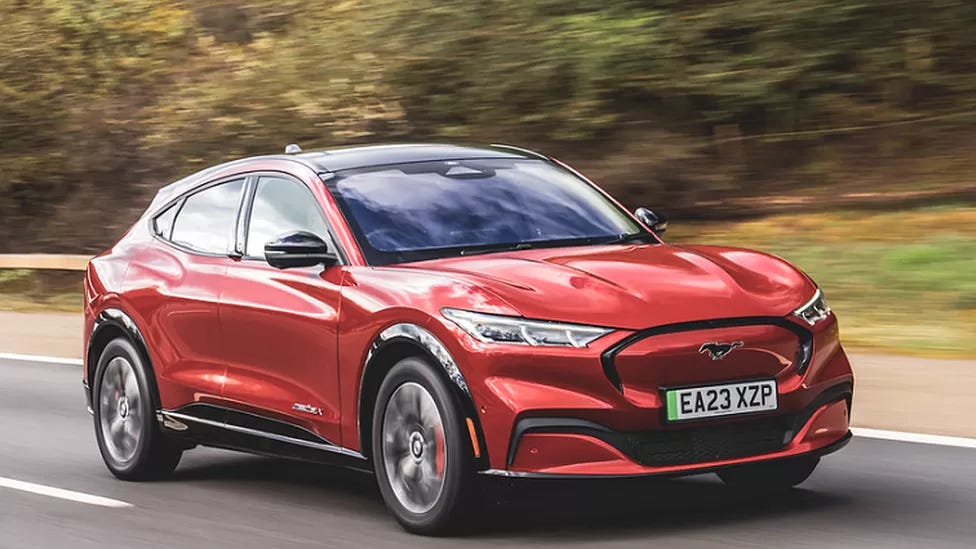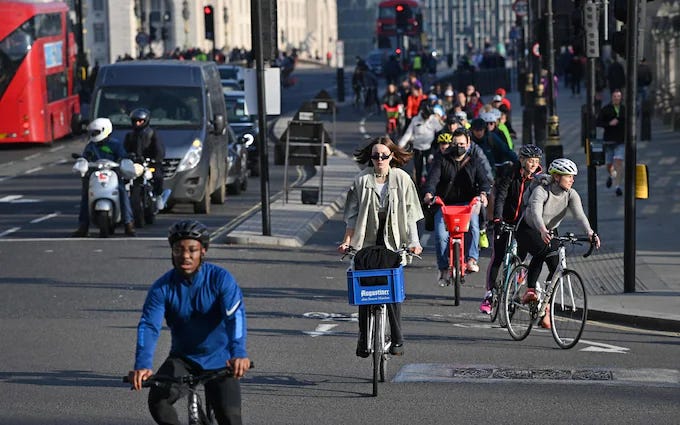Autonomous Driving Has The Same Problem As Cycling
This week Ford UK made a big announcement of its 'BlueCruise' technology that will allow "hands off" autonomous driving on certain motorways.
Have a read here, but what I want to draw attention to some of the comments from the general public.
There are a couple of things that are somewhat not striking. Firstly, drivers of Tesla vehicles with Autopilot and so-called Full Self Driving will be scratching their heads saying they have had this for a few years, so what's new to talk about? Then, there are the Ford attempts to satisfy people how safe the systems are and the multiple safeguards they have built-in.
Now let's pull out a few of the remarks from the more than 2,000 comments, not to beat-up anyone in particular but to get a sense of what the public is thinking:
"I don't like the way car makers are heading to a subscription model for features."
"This is all completely bonkers. Why is it necessary? What is the driver supposed be doing instead that is more important than controlling the vehicle. It will obviously end in tears"
"Cannot see any reason for this technology, you still have to sit in the driver's seat, be fully awake and ready to grab the controls at a moments notice"
"A classic example of technology push without a consumer need. Nobody in their right mind will take their hands off the steering wheel whilst doing 70 mph on a motorway."
"All this fuss, and it offers so very little - If I had a truly driverless car, I would want to be able to have it drive me out to a remote country pub, where I could get absolutely legless, then jump in the back and have the automated system drive me home safely."
"This technology is aimed at people who should really be on a bus or train instead."
What we see here are people comfortable with how things are, not ready for change, and more concerned about risks than marginal and unrequired benefits.
So, why did I bring up cyclists? Because the increase of cycling popularity and the modification of road systems to accommodate them shows where the problems arise in adapting transport usage and the accompanying systems.
Before we consider these as traffic problems, let's consider the challenge of behaviour change.
No doubt, we're all familiar with the product or technology adoption curve and how a few early adopters lead a market change. But here we see the majority users - who by definition are late adopters - wholly resistant to change because they see it as NOT in their interests to change.
Where the change in cycling use has increased substantially is where the associated transport infrastructure was modified to make it safer and more convenient - even though other vehicle users have perceived themselves as 'losing' out. (I go along with the argument that 'doing nothing' results in traffic standstill as roads cannot cope with increasing demand).
This leads to what I hope is the necessary revelation: It is appropriate infrastructure that is holding back the switch to autonomous vehicles. I agree with those reader comments that trying to fit autonomy alongside human drivers doesn't work and that our roads aren't ready for the technology.
The progression to autonomous vehicles is not being held back by the technology development. It's quite clear that technology of software, sensors and data networks is running way ahead of the ability to deploy at scale.
It is the wrap around of roadways, road rules and interactions with other users that is the 'system' that is not ready and not being addressed.
What are some lessons from cycling that can be learned from for accelerating the readiness of autonomous transport for mass adoption?
I consider we are not working enough on:
Dedicated corridors - separated roadways for sole use by autonomous vehicles. This removes conflict and reduces complexity. It should also incentivise the use of the vehicles resulting in greater demand - a virtuous cycle.
Greater good - use autonomy to provide better access to transport for all, rather than just for the privileged few that can afford to purchase the vehicles. A vision of transport on demand, door to door services, and accessibility will gain support from those that are choosing to not buy cars or can't afford to.
Priority road rules - rules and regulations should be aligned to encourage and support transport mode change. Rather than fitting these new vehicles into existing systems, create a new paradigm exclusively for them.
It seems inevitable that autonomous transport will become the norm, that as existing vehicles reach end of life that fewer people will choose to own a vehicle and the vehicles in use will be autonomous. Technology is not holding back this future, it is the transport system that is proving hard to adapt.
The answer to accelerating the transport mode to autonomous is focus on a system that needs to be separated and exclusive for autonomous vehicles. This new system should be designed for those that can't access convenient transport at present and not build exclusively for the 'privileged rich'. Over time this new system expands for all road users on all roadways.
#autonomousvehicles #traffic #highways #motorways #vehicles #transport



